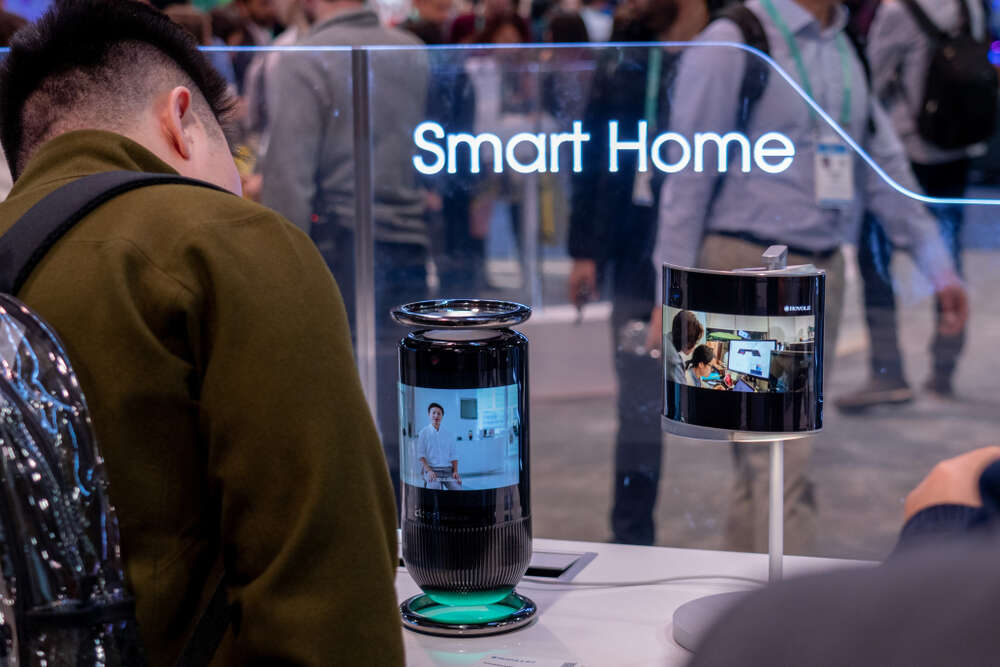
It’s a good time to buy Hanwang Technology – that, at least, was the message that spread like wildlife among China’s meme stock aficionados. Fuelled by a wave of enthusiasm in the country’s tech sector for all things ChatGPT, the firm’s share price has been steadily rising since January, fuelled not out of any public love for its e-books and tablets, but by a company statement claiming that its in-house natural language processing technology was inching closer to the generative AI service China had grown to love over the past few weeks.
Hanwang Technology’s actions quickly fell foul of stock market regulators, who demanded that the firm provide further details about its NLP software and confirm that it hadn’t been involved in any insider trading. The company isn’t alone, however, in trying to harness the wave of enthusiasm surrounding generative AI in China. Share prices for other firms involved in artificial intelligence research have jumped, while Baidu, China’s pre-eminent search engine, has announced its own version of ChatGPT build off its ERNIE 3.0 large language model – all while Chinese netizens continue to ask the generative AI to write screenplays and comment on the Zero Covid policy, despite the best efforts of state censors.
In many ways, the national conversation about ChatGPT in China is similar to the one taking place in the US and Europe, explains Rui Ma, a venture capitalist and the creator of Tech Buzz China. “People are trying to figure out what is the best opportunity, or the right opportunity, to go after this technology,” she says, including not only speculation about how ChatGPT-like services could transform areas such as search and copywriting, but potentially automate white-collar roles at such a scale as to effectively solve the emerging challenges China faces with its ageing population.
There’s also an undertone of vague embarrassment in the way that many start-up owners talk about ChatGPT, says Ma – not simply that a Chinese company didn’t come up with a similar service first, but that the sector lacked the wherewithal to conceive of something like that in the first place. It’s a sentiment echoed by other Chinese tech investors she has spoken to, men and women who told her that they were likely to get more intellectual stimulation out of a holiday in the Mediterranean than they were touring the start-ups of Silicon Valley. “The self-perception was that we’re way ahead, we’re coming up with a lot more interesting mobile internet innovations,” says Ma.
ChatGPT has quietly disabused them of this illusion. “It wasn’t that China doesn’t have the brainpower, or even necessarily a fundamental understanding of the models, because they’re mainly based on research from a few years ago,” says Ma. “It was more like, even if you had the brainpower, if you didn’t have the vision to go in this direction and actually create this, then you wouldn’t have made it.”

China’s generative AI guardrails
ChatGPT was also released amid an inflection point for Chinese AI generally, says Matt Sheehan, an Asia fellow at the Carnegie Endowment and the author of The Transpacific Experiment: How China & California Collaborate & Compete. Several years ago, during the birth pangs of China’s AI sector, giants like Baidu, Alibaba and Tencent were very happy to invest heavily in long-term research projects and laboratories. These projects have since been scaled back in the interests of more profitable pursuits, just as the Chinese Communist Party (CCP) has successfully reasserted its authority within the country’s tech industry.
That campaign, a two-year period that saw the CCP wreck major IPOs and curtail the careers of some of China’s more outspoken tech executives, also resulted in new regulations ideally suited to the emergence of generative AI. Last month, the Cyberspace Administration of China (CAC) began implementing new rules on the use of recommendation algorithms and what it termed ‘deep synthesis’ technology, encompassing VR and deepfake software. One of the most advanced of these concerns is the watermarking of content produced by generative AI – something that’s only just become part of the mainstream conversation about such applications in the West.
While this new regulatory playbook is one of the more advanced in the world, explains Sheehan, it’s not evidence of the Chinese state responding to concerns about generative AI in real time. These specific regulations, he continues, can be traced back to a CCP Central Committee document titled ‘Implementation Outline for Building a Society Ruled by Law (2020-2025)‘ published in December 2020, itself heavily influenced by a couple of think tank papers published the previous year. Back then, says Sheehan, “we all knew that deepfakes were a thing, but they were still pretty back of mind for a lot of people”. Not so, it seems, for the CCP. What started as a relatively innocuous set of policy recommendations transmogrified into a directive from the highest echelons of the party to government bureaucrats that they should adapt to potential ills of generative AI – and quickly.
The relevant agency in this case was the CAC, says Sheehan, which responded with a draft regulatory framework late last year. The new rules aren’t so technically sophisticated, adds the author: the watermarking rule, for example, mentions the necessity for a visual marker in generative AI content, as opposed to subtler signals embedded in code readable by deepfake detectors (indeed, Sheehan suspects that the guidance will soon be updated to accommodate more commercial uses for generative AI). Other innovations, though, like the new national algorithm registry, are practical implementations of measures like model cards hitherto only dreamt of by the international AI ethics community.
The Chinese government’s inclination to move fast and first on AI governance, says Ma, is partly attributable to a conviction such guardrails genuinely spur innovation, the idea being that start-ups will be more inclined to experiment if they know where the legal tripwires have been set. There’s also a sense that swift action, especially in generative AI, will set benchmarks for the rest of the world to follow – potentially helping China to define the ground rules in its favour for decades to come.
Sheehan is sceptical about this argument, seeing China’s regulatory leadership in this space as more as a happy accident than anything intentional. The idea behind the original policy document, after all, was to come up with new ideas to enhance informational security on the country’s internet – a spirit that remains in evidence in the end result. Ultimately, when Beijing is forced “to choose between doing something impressive on the international stage or maintaining tight control domestically,” argues Sheehan, “they will never place international leadership above a domestic objective.”

BERT and ERNIE
Whatever the motivations behind the law, China’s new regulatory framework on generative AI has put it in an enviable position to harness the propulsive energy of the field. Indeed, many Chinese tech companies are positioning themselves to race down the path defined by the CCP and surpass ChatGPT’s ability to electrify the public imagination – so much so that Ma gives the sector about six months before it produces something as entrancing and potentially lucrative.
Chinese tech companies have done it before, adds Ma. “You can kind of see it with Tesla,” she says, the first electric vehicle manufacturer to hit the international mainstream. It took only a few years, though, for a plethora of Chinese car companies to begin mass production of EVs and dominate the domestic market, and perhaps even begin to obtain a sizeable market share abroad, too. It’ll be less of an engineering challenge to build generative AI on a par with ChatGPT, says Sheehan. If anything, China’s AI sector is in a better position to catch up with its US counterparts than its EV sector ever was, having already achieved something similar with LLMs. “Google came out with BERT,” recalls Sheehan, before “Baidu came out with ERNIE” in little under a year.
It’ll take less time, though, to see practical applications from smaller generative AI models. That’s probably because there seems to be a pervasive tolerance for the errors in many of the outputs created by the likes of ChatGPT and DALLE-2, says Ma, with much of the excitement deriving from the speed in their production of outputs, and not necessarily in their accuracy. The additional time it takes to edit the result is as much a fair price to pay for a furniture company looking for an AI to write the instruction manual for assembling a new table as it is the anxious high school student looking to bash out their latest History essay before their deadline.
Therein lies the power of ChatGPT, says Ma – one that Chinese tech companies are eager to harness for their own customers and, ultimately, their bottom line. “It’s really easy to implement,” she says. “And you can see the immediate impact.”






